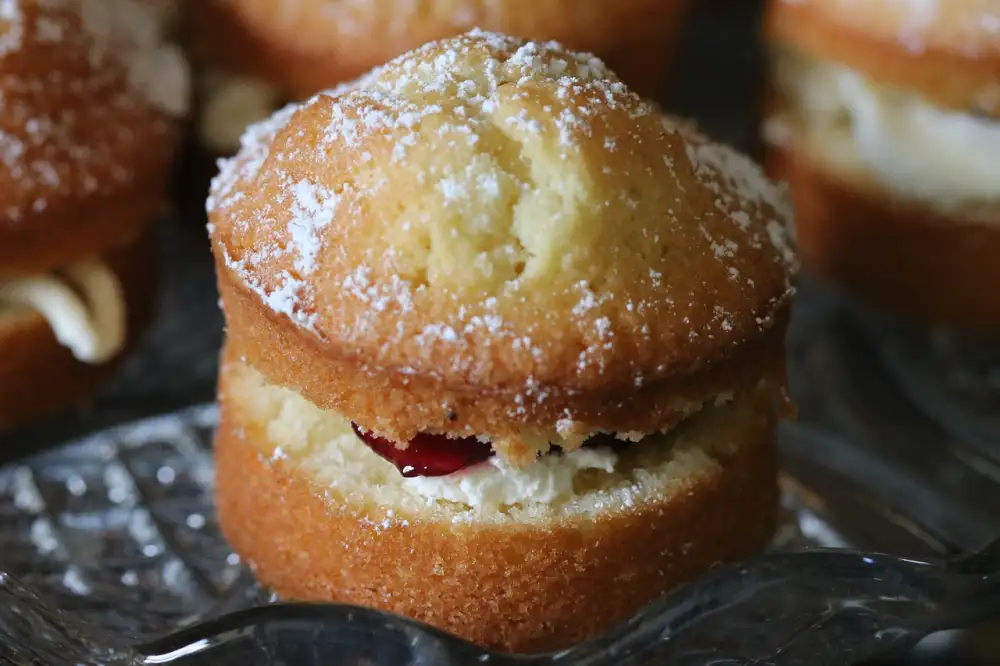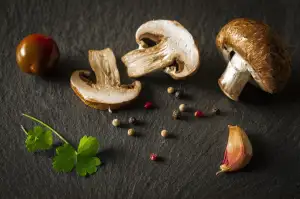Indulge in Royalty with Our Irresistible Victoria Sponge Cake Recipe

- Ingredients required for baking
- Step-by-step instructions for preparing the cake
- Tips for achieving a light and fluffy sponge
- Variations and additions to the traditional recipe
- Serving suggestions and accompaniments
- Storage and shelf life of Victoria Sponge
- Historical background and significance of the cake
Victoria Sponge cake, a quintessentially British dessert, is a classic and beloved treat that has stood the test of time. Named after Queen Victoria, who was known to enjoy a slice with her afternoon tea, this cake is a symbol of elegance and tradition. The Victoria Sponge consists of two layers of light and airy sponge cake sandwiched together with a layer of jam and dusted with powdered sugar on top. Its simplicity in ingredients allows the delicate flavors to shine through, making it a favorite for all occasions.
Ingredients required for baking
Ingredients required for baking a delicious Victoria Sponge cake are simple and readily available in most kitchens. You will need:
- 200g of softened unsalted butter
- 200g of caster sugar
- 4 large eggs
- 200g of self-raising flour
- 1 tsp of baking powder
- 2 tbsp of milk
These basic ingredients come together to create a light and fluffy sponge that is perfect for any occasion.
Step-by-step instructions for preparing the cake
1. Preheat the oven to 180°C (350°F) and grease two 8-inch round cake pans.
2. In a mixing bowl, cream together 200g of softened butter and 200g of caster sugar until light and fluffy.
3. Beat in 4 large eggs, one at a time, adding a tablespoon of flour with each egg to prevent curdling.
4. Gently fold in 200g of self-raising flour until just combined.
5. Divide the batter evenly between the prepared cake pans and smooth the tops.
6. Bake for 20-25 minutes or until the cakes are golden and spring back when lightly pressed.
7. Allow the cakes to cool in the pans for 5 minutes before transferring them to a wire rack to cool completely.
8. Once cooled, spread jam on one cake layer and whipped cream on the other before sandwiching them together.
9. Dust with icing sugar before serving slices of this delectable Victoria Sponge cake.
Tips for achieving a light and fluffy sponge
To achieve a light and fluffy Victoria Sponge cake, it is crucial to properly cream the butter and sugar together until pale and fluffy. This process incorporates air into the mixture, resulting in a lighter texture. When adding eggs, ensure they are at room temperature to prevent curdling and aid in better incorporation. Sifting the flour before adding it to the batter helps to aerate the dry ingredients and avoid clumps, leading to a smoother consistency. Finally, avoid overmixing the batter once the flour is added to prevent gluten development, which can result in a dense cake rather than a light sponge.
Variations and additions to the traditional recipe
Variations and additions to the traditional Victoria Sponge recipe allow for creative twists on this classic cake. For a fruity touch, add a layer of fresh berries like raspberries or strawberries between the sponge layers. You can also incorporate lemon zest into the sponge batter for a zesty flavor profile. For a richer taste, consider spreading a thin layer of homemade jam or curd between the layers before dusting with powdered sugar. Experiment with different fillings such as whipped cream, chocolate ganache, or even a coffee-infused buttercream for unique flavor combinations that will delight your taste buds. The possibilities are endless when it comes to customizing this timeless dessert to suit your preferences and elevate its indulgent appeal.
Serving suggestions and accompaniments
When it comes to serving Victoria Sponge cake, the options are endless. For a classic presentation, dust the top with powdered sugar or a light sprinkle of cocoa powder. You can also add a dollop of freshly whipped cream and a handful of fresh berries on the side for a touch of elegance. If you're feeling indulgent, a drizzle of warm chocolate sauce or caramel over each slice will take this dessert to the next level. Pairing it with a cup of English breakfast tea or a glass of champagne will complement the flavors perfectly. Whether served at an afternoon tea party or as a delightful dessert after dinner, Victoria Sponge cake is sure to impress your guests and leave them craving more.
Storage and shelf life of Victoria Sponge
To maintain the freshness of your Victoria Sponge cake, it is best stored in an airtight container at room temperature. Properly stored, the cake can last for up to 3-4 days. However, if you prefer a chilled cake, it can be refrigerated for up to a week. To freeze the cake, wrap it tightly in plastic wrap or aluminum foil and store it in an airtight container. When ready to enjoy, thaw the cake overnight in the refrigerator and bring it to room temperature before serving for the best taste and texture.
Historical background and significance of the cake
The Victoria Sponge cake holds a special place in British culinary history, named after Queen Victoria who was known to enjoy a slice with her afternoon tea. This classic cake is said to have been a favorite of hers, leading to its popularity during the Victorian era and beyond. Its simplicity and elegance reflect the refined tastes of the time, making it a timeless treat that continues to be cherished by many today. The significance of the Victoria Sponge lies in its cultural importance as a symbol of tradition and indulgence, embodying the essence of British baking heritage.
Published: 30. 03. 2024
Category: Recipes



